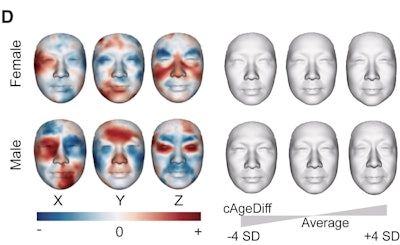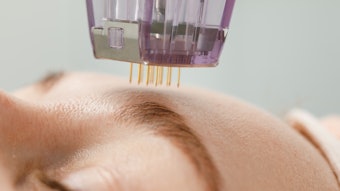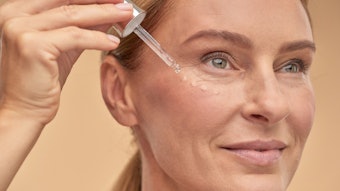
Recent advancements in thermal imaging technology have led to the development of ThermoFace (TF), an innovative method for assessing age and metabolic health. In a recent study published in Cell Metabolism, researchers collected over 2,800 thermal facial images from Han Chinese individuals aged 20-90 years to create this deep learning model. TF demonstrates remarkable accuracy in predicting age, with a mean absolute deviation of approximately 5 years in cross-validation and 5.18 years in an independent cohort.
Related: 7 Ways to Address Facial Aging for Different Ethnic Phenotypes [Survey Results]
Facial Temperature Patterns Linked to Biological Age & Metabolic Health
 ThermoFace aging clock: Projections of ThermoFace PLSR cAgeDiff on a 3D facial image (left: color scale in arbitrary units). Red and blue denote, respectively, higher and lower values along x, y, and z axes (left). Synthesized female and male average profiles between −4 and +4 SD of loading values of PLS component 1 and 2 (right).Photo courtesy of Cell Metabolism
ThermoFace aging clock: Projections of ThermoFace PLSR cAgeDiff on a 3D facial image (left: color scale in arbitrary units). Red and blue denote, respectively, higher and lower values along x, y, and z axes (left). Synthesized female and male average profiles between −4 and +4 SD of loading values of PLS component 1 and 2 (right).Photo courtesy of Cell Metabolism
Beyond age prediction, the study revealed this technology shows promise in forecasting metabolic diseases. The model can predict conditions like fatty liver with high accuracy (AUC > 0.80), with the predicted disease probability correlating well with metabolic parameters. This capability opens up new possibilities for rapid, non-invasive screening of metabolic disorders in clinical settings.
Key Findings & Implications:
- The TF method can predict age with a mean absolute deviation of about 5 years
- Facial temperature patterns correlate with metabolic health indicators
- The model can forecast metabolic diseases like fatty liver with high accuracy
- Lifestyle factors such as sleep duration and exercise can modify the predicted age
- Potential applications include rapid assessment of aging, metabolic disease screening and monitoring intervention effectiveness
This technology represents a significant advancement in non-invasive health assessment tools, offering medical professionals a quick and efficient method to evaluate patients' metabolic health and biological age.











